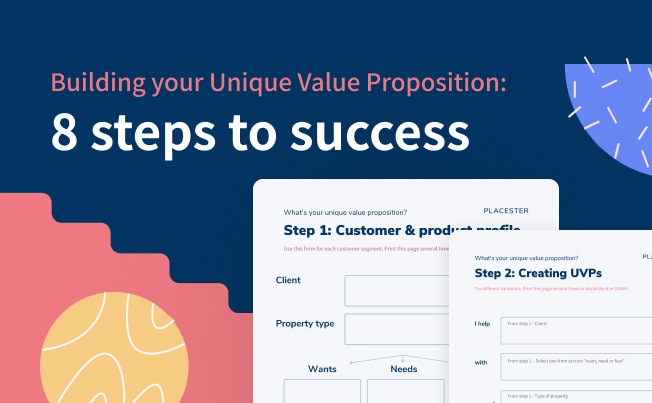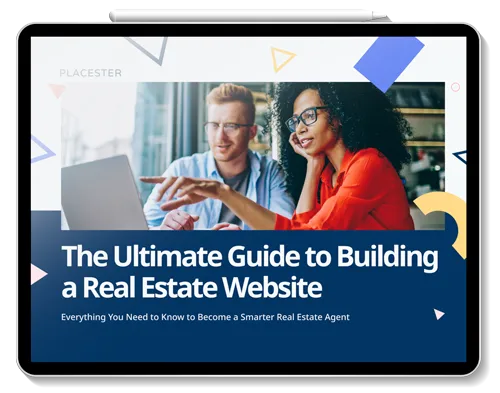Building your Unique Value Proposition: 8 steps to success
One of the most meaningful pieces of advice that new real estate agents get is to create a unique value proposition, or UVP, which helps articulate why a buyer or seller might want to hire them. And while many agents do a decent job of nailing down some kind of value proposition, they struggle to make it, well, unique.
In case you need to brush up: Your UVP is a short statement that explains who your clients are, the specific problem you solve for them, and why you’re able to do that more effectively than other agents in your market. Many top agents have more than one UVP, and it’s not a terrible idea to reevaluate your UVP every now and then to ensure it’s still reflective of your day-to-day business.
If you’re not sure how to create your UVP—or you’d simply like to try a more standardized approach—we’ve broken the process into eight steps. You’re welcome!

Step 1: Research your competitors
Perhaps you’re the only agent specializing in land sales for yurt builds in your remote mountain county, in which case you can probably skip this step. Otherwise, it’s going to be tough to create a truly unique value proposition if you don’t know what other value propositions are floating around your market.
Spend some time browsing the websites and social media pages of the agents (and teams!) you most want to compete against for clients. Take a few notes regarding their UVPs, or what you imagine them to be; some might not be spelled out, while others will be printed on the banner images at the top of the page.
The ultimate 2024 guide to building a real estate website
Get your FREE copy now!
Step 2: Categorize your clients
Sit down with a list of your recent transactions and ask yourself whether there are any patterns in the types of clients you’ve helped. Are there veterans on that list? High-net-worth buyers or sellers? First-time homebuyers? Families with pets? Tech executives or office commuters?
You might not notice any, or you might notice several—it’s perfectly fine at this step to feel like there isn’t a rhyme or reason to the type of buyer or seller you’ve cultivated. The real trick to figuring out your UVP is pinning down the value, and we’re still laying the groundwork.
Step 3: Consider property types
While you’ve got your transactions in front of you, ask yourself whether you can find any themes in the types of properties that you’ve ushered through a transaction. Maybe you’ve worked on a lot of condos (or co-ops in certain areas of the country), duplexes, or other deviations from a single-family home. Or perhaps you’ve dealt with historic properties, new construction, fixer-uppers, or even a particular architectural style, such as mid-century modern homes.
When you’ve cultivated expertise in a certain type of home, you can definitely use this knowledge to create your UVP. But you might not remember or realize that you have it until you write it down!
Step 4: Evaluate problems you’ve solved
This is the heart of your UVP. When you can explain what challenges you’ve helped buyers and sellers overcome in a succinct way, it expresses your value in an undeniable way. Even if you weren’t able to segment your buyers or the types of properties in a meaningful way, if you can identify a problem or two that you’re adept at solving, your UVP has practically written itself.
As you’re browsing your transactions, think about the big snags that emerged in each of them. Did you help several buyers find a home in their budget (and win a bid) in a blazing-hot market? Did multiple homes appraise below the asking price? Are you uncannily talented at finding high-net-worth buyers for luxury homes? Have you worked with several long-distance buyers who wanted in on the vacation rental market?
You might also want to pull out some data for this step. Are your days on market for listed homes shorter than other agents in the area, and can you quantify that? What percentage of offers that you write for your buyers are accepted?
When you’ve collected a list of problems you’ve solved, it’s time to start figuring out why you’re amazing at solving them.
Step 5: Can you claim neighborhood expertise?
For many clients, longevity and spending a lifetime in a neighborhood or area is the biggest indicator of skill level, but there are lots of other ways you can express how well you know an area.
Maybe you’ve worked with the developer who’s built all the new construction and can talk at length about their skills and home pricing. Perhaps you moved into the neighborhood a few years ago as a parent and know a lot about the different schools because you did your research back then. Consider where you’ve helped buyers and sellers transact, and think about whether you have any local knowledge or insight that has given you (and them) an edge.
Step 6: What other skills do you bring to the table?
Former careers, hobbies, or special interests can all be a selling point for potential clients who are trusting you with an enormous life decision and transaction.
It could be your love of your pets, time spent flying small planes on the weekends, or almost a decade spent wrangling stocks on Wall Street for demanding clients, but there’s probably something about you that makes you extra-effective at your job.
Step 7: Threading it all together
Now that you’ve got all the building blocks, it’s time to create your UVP! A simple structure to start with might look something like this:
“I help (type of buyer/seller) with (big challenge) around (type of property) and am successful because (expertise/skill set).”
Here are a few examples of how you’d express it when it’s all finished.
- I help enlisted military members and veterans sell their house 30% faster, which I can do because of my personal experience serving ten years in the military.
- I help sellers for luxury properties find batches of qualified high-net-worth buyers so their house isn’t sitting on the market for years; I’m really successful because I have a strong network of those buyers.
- I help people with dreams of living off-the-grid find land and figure out the best way to build; I’ve been doing land sales for years, and I know contractors who specialize in those types of homes.
- I help homeowners who want to create a steady income stream and who aren’t quite ready to sell put together lease-option agreements for rent-to-own buyers, and then I help them manage those agreements; I’m currently working with 20 homes that have renters intent on buying when their leases are up.
- I’ve helped a lot of retirees find their dream home on the waterfront in Bay Views Park, where I grew up, so I know the subdivisions there like the back of my hand; they were all being built while I was riding my bike around as a kid.
- I’m a new construction specialist who’s familiar with all of the different developers and their subdivisions in the area and can detail who cuts corners and whose work is always above-and-beyond when it comes to new builds.
Remember, you might want to craft more than one UVP. If you know the person you’re talking to owns a house in the neighborhood where you’re known as a total rockstar, then you might want to pitch them your seller-focused UVP, for example.
Step 8: When to find a new UVP
Your UVPs aren’t supposed to last forever. Maybe other agents in your area have started imitating yours, making it tough to stand out from the crowd. Take it as a compliment; it means your UVP was pretty amazing!
It’s wise to rewrite your UVP once a year, but don’t hesitate to run through these steps more frequently than that. Market shifts or changes can mean that a UVP that was compelling three months ago now feels lukewarm, and you should review your UVP (or UVPs) quarterly to ask yourself if it still articulates the real value your clients feel when you work with them as their agent.
Published on
October 17, 2021
(Last updated on
December 6, 2023
)





.png)



